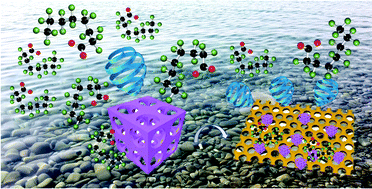Reverse osmosis and nanofiltration membranes for highly efficient PFASs removal: overview, challenges and future perspectives
Abstract
Today, it is extremely urgent to face the increasing shortage of clean and safe water resources, determined by the exponential growth of both world population and its consumerism, climate change and pollution. Water remediation from traditional chemicals and contaminants of emerging concerns (CECs) is supposed to be among the major methods to solve water scarcity issues. Reverse osmosis (RO) and nanofiltration (NF) membrane separation technologies have proven to be feasible, sustainable and highly effective methods for the removal of contaminants, comprising the extremely persistent and recalcitrant perfluoroalkyl substances (PFASs), which failed to be treated through the traditional water treatment approaches. So far, however, they have been unable to assure PFASs levels under the established guidance limits for drinking water and still suffer from fouling problems, which limit their large-scale application. Novel configurations, improvement in process design and the development of high-performant materials for membrane production are important steps to tackle these issues, especially in view of new more stringent regulations limiting PFASs content in drinking water. As a possible future strategy, nanocomposite mixed matrix membranes (MMMs) offer a platform of advanced materials which promise to revolutionize RO/NF technologies for water treatment. In particular, the introduction of MOFs as adsorbent fillers in the polymeric membrane matrix appears as a viable approach for the effective and selective capture and removal of PFASs from water. The objective of this review is to provide a dedicated outlook on the most recent advances in RO and NF membrane technologies for PFASs removal. The effects of membrane properties, the solution chemistry, and contaminant properties on the RO/NF performances will be discussed in detail. Future challenges are also discussed, offering new perspectives toward the development of new advanced membranes with improved performance for PFAS removal, which are likely to significantly progress RO and NF technology for water remediation.

- This article is part of the themed collections: PFAS: cleaning up drinking water and 2021 Frontier and Perspective articles


 Please wait while we load your content...
Please wait while we load your content...